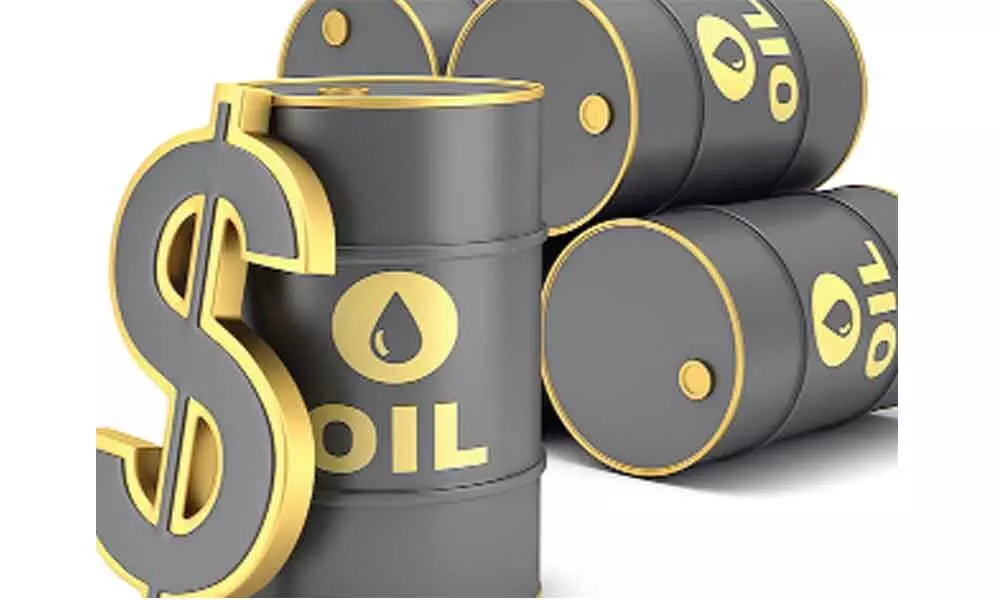Does OPEC+ need to worry about oil shortfalls?
The oil producer group known as OPEC+ keeps trumpeting its flexible approach to balancing the global oil market. As prices test $80 a barrel, that flexibility needs to include raising the amount of oil they plan to pump in the coming months.
image for illustrative purpose

The oil producer group known as OPEC+ keeps trumpeting its flexible approach to balancing the global oil market. As prices test $80 a barrel, that flexibility needs to include raising the amount of oil they plan to pump in the coming months.
Oil ministers from the Organization of Petroleum Exporting Countries (Opec) and their allies are due to meet via video conference on Monday, when they will agree on their production target for November. The group has already put in place a program of increases that will see them raise their combined target by 400,000 barrels a day each month until they have restored all the supply they cut last year.
But they need to do more to exercise that flexibility they keep touting. Their own analysts, who presented their findings to the group's technical committee last week, see global stockpiles continuing to be drawn down over the next two months, before a swing in the opposite direction early next year.
The ministers could be forgiven for looking at the chart above and concluding that next year's over-supply is a bigger concern than the shortfall expected in October and November. But there are some very odd looking numbers behind those forecasts.
The production numbers for the countries that aren't part of the OPEC+ group are strange indeed. Their production increased by 700,000 barrels a day between August and September. But where was that coming from? We know that output in the US - by far the biggest member of that group - went in the opposite direction last month, thanks to the damage caused by Hurricane Ida.
Weekly data suggest that US production in September was down month on month by about 550,000 barrels a day, which means that the rest of the group must have raised supply by a whopping 1.25 million barrels a day. Really?
By the end of September, Hurricane Ida was responsible for the loss of about 32 million barrels of production from the Gulf of Mexico, according to figures from the US Department of Energy. That's not far off from two months' worth of OPEC+ output increases - assuming they can add a full 400,000 barrels a day each month, which is doubtful. The disruption will continue at the current rate of almost 300,000 barrels a day for weeks to come and production won't be fully restored until sometime in the first quarter of next year.
That leads to a second problem with the numbers. The forecast seems unreasonably optimistic about OPEC+ production. It shows the group adding 1.2 million barrels a day last month (with three-quarters of that coming from the 13 members of OPEC) and then climbing by the full amount of the increasing target in subsequent months. It seems that the August figure is the actual production, while the September and subsequent figures represent what the group should pump were it to meet its targets.
Bloomberg's tracking of export flows from OPEC countries doesn't show anything near that big a jump last month. And the difficulties that some countries are having in meeting their rising output targets are well documented. Expect those forecast numbers to be revised down significantly once the real figures come in.
That's going to increase the size of the oil shortfall in September and, by extension, for the rest of the year, and to reduce the builds in early 2022. The report to the committee went on to note that commercial oil stockpiles in the countries of the OECD had fallen by 20.1 million barrels in August to stand at 131 million barrels below their 2015-2019 average. But hitting that average was, in the words of Saudi energy minister Prince Abdulaziz Bin Salman, the group's target - a target that it has clearly overshot by a wide margin.
Stockpiles are going to matter as the Northern Hemisphere heads toward winter. Soaring natural gas and electricity prices in Europe and Asia could boost demand for oil by as much as 500,000 barrels a day, as industry and power generators look for alternatives. And oil demand is about to get another lift from the easing of US border restrictions and consequent reopening of transatlantic air routes.
I wrote back in June that OPEC+'s flexibility needs to work in both directions - responding both to unexpected strength, as well as weakness in the oil market. That is as true now as it was then.
The path that the group should take when it meets is clear: It needs to boost its November output target by more than the planned 400,000 barrels a day; it's too late to do much about October. If the weakness anticipated early next year does materialize, then the flexibility can work the other way, with further output increases delayed, or even reversed. There's no point in having a flexible policy if you're not going to use the freedom it gives you. (Bloomberg)

